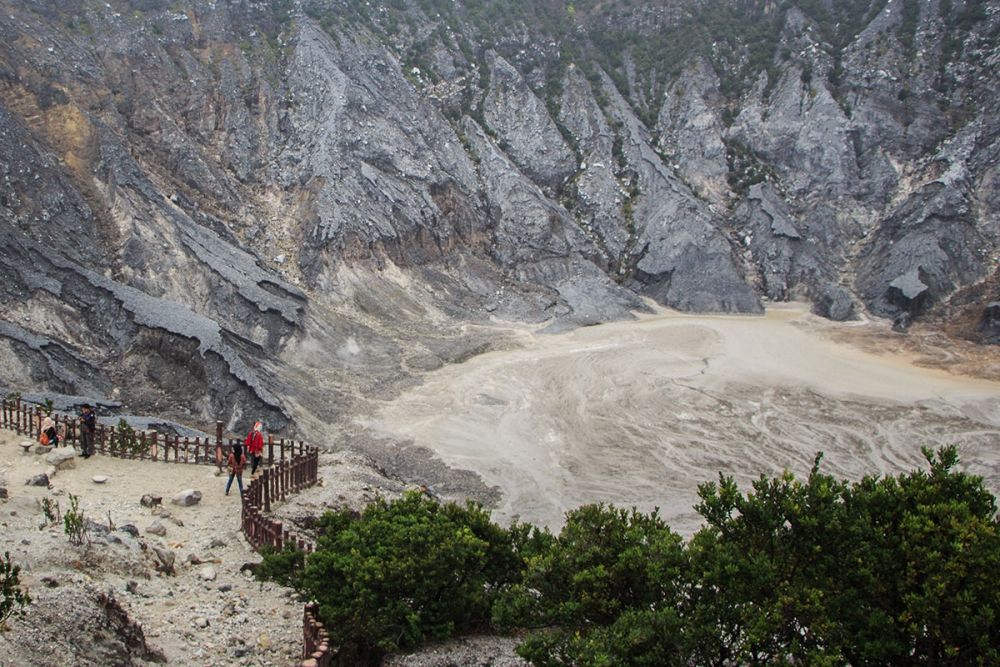

Tangkuban Perahu, one of the most iconic landmarks in Bandung, Indonesia, has a rich history entwined with both geologic activity and local folklore. Its name, which means "upturned boat" in Sundanese, comes from the shape of the mountain which resembles an overturned vessel. According to legend, this shape was the result of a tragic love story between the prince Sangkuriang and his own mother, Dayang Sumbi. Over the years, this tale has become an integral part of the mystique that attracts tourists.
The history of tourism at Tangkuban Perahu is closely linked with the development of Bandung as a tourist destination. During the Dutch colonial era in the late 19th and early 20th centuries, Bandung was developed as a resort city for Dutch plantation owners, which was also when Tangkuban Perahu began to draw visitors for its striking volcanic features and cool mountain air.
Early Tourism
Initially, Tangkuban Perahu's visitors were mostly Dutch colonialists and wealthy locals. They would venture to the mountain for nature walks and to partake in the therapeutic benefits attributed to its sulfurous hot springs. By the mid-20th century, tourism initiatives by the newly independent Indonesian government helped to further promote the area.
Infrastructure Development
The Indonesian government recognized the potential of Tangkuban Perahu and invested in infrastructure to make it more accessible. Roads were improved, and the parking areas near the craters were developed. Facilities such as souvenir shops, food stalls, and viewing decks started to sprout, catering to the growing number of visitors.
Recent Trends in Tourism
In recent years, there has been a shift towards eco-tourism and sustainable practices in the region. Visitors are now more interested in experiencing nature, participating in conservation efforts, and learning about the geological significance of the mountain. Sightseeing remains popular, with the Main Crater (Kawah Ratu) being the primary attraction, along with other smaller craters that can be explored by foot or jeep.
In response to the increase in digital nomadism and a global interest in local culture, there has also been a trend towards cultural experiences. Tourists can engage with local Sundanese cultural practices, crafts, and cuisine, enriching their visit beyond the natural splendor of the mountain.
An unfortunate downturn in tourism occurred with the global COVID-19 pandemic, which saw travel restrictions limit the number of visitors to Tangkuban Perahu. However, as the situation improves, there is a concerted effort by the tourism industry to rejuvenate interest and bring back tourists, both domestic and international.
Future of Tourism
Looking forward, there is an emphasis on sustainable tourism, ensuring that the beauty of Tangkuban Perahu can be preserved for future generations. The Indonesian government and local communities are working together to balance development and conservation, aiming to provide a memorable experience for tourists while protecting this significant natural gem.